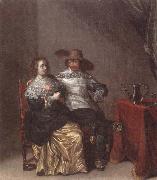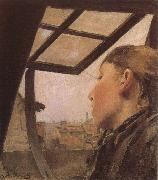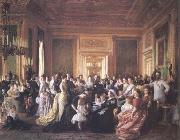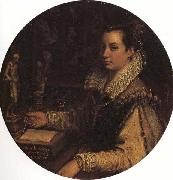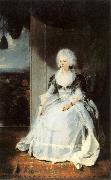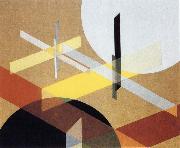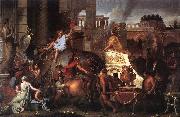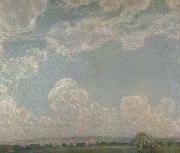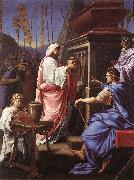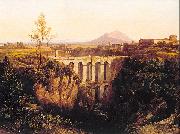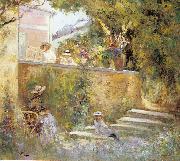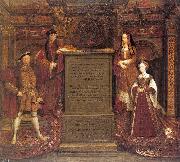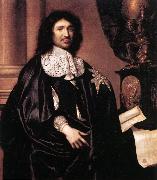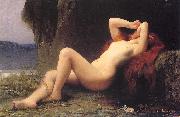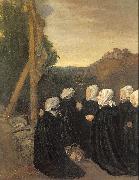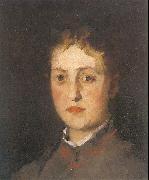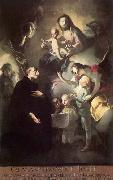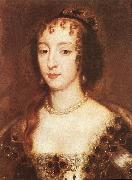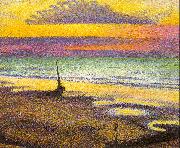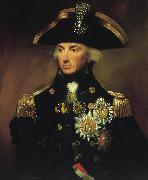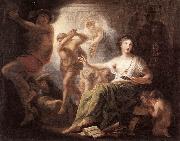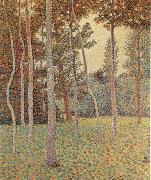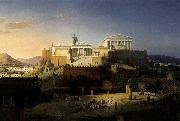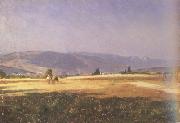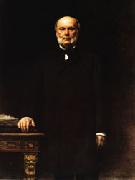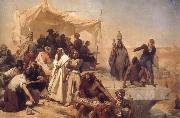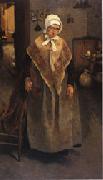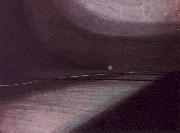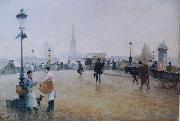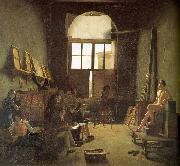|
|
|
|
|
|
|
|
|
|
|
|
|
|
|
|
|
|
|
|
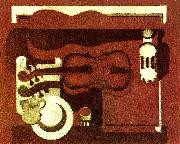 |
le corbusier
|
|
Charles-Edouard Jeanneret-Gris, who chose to be known as Le Corbusier (French pronunciation: October 6, 1887 ?C August 27, 1965), was a Swiss-French architect, designer, urbanist, writer and also painter, who is famous for being one of the pioneers of what now is called Modern architecture or the International style. He was born in Switzerland and became a French citizen in his thirties.
He was a pioneer in studies of modern high design and was dedicated to providing better living conditions for the residents of crowded cities. Later commentators have criticized Le Corbusier's monoliths as soulless and expressive of his arrogance in pioneering his form of architecture.
His career spanned five decades, with his buildings constructed throughout central Europe, India, Russia, and one each in North and South America. He was also an urban planner, painter, sculptor, writer, and modern furniture designer.
Le Corbusier adopted his pseudonym in the 1920s, allegedly deriving it in part from the name of a distant ancestor, "Lecorbesier." However, it appears to have been an earlier (and somewhat unkind) nickname, which he simply decided to keep. It stems from the French for "the crow-like one". In the absence of a first name, some have also suggested it suggests "a physical force as much as a human being," and brings to mind the French verb courber, to bend. |
|
 |
le dimanche
|
|
was a Spanish surrealist painter.
Born in San Cristebal de La Laguna on the island of Tenerife, Domenguez spent his youth with his grandmother in Tacoronte and devoted himself to painting at a young age after suffering a serious illness which affected his growth and caused a progressive deformation of his facial bone frame and limbs.
He went to Paris at 21 where he first worked for his father in the central market of Les Halles, and spent his nights drinking in cabarets. He then frequented some art schools, and visited galleries and museums.
Domenguez was rapidly attracted by avant-garde painters, notably Yves Tanguy and Pablo Picasso, whose influences were visible in his first works. At 25 he painted a self-portrait full of premonition as he showed himself with a deformed hand and with the veins of his arm cut. He chose to kill himself 27 years later by cutting his veins.
In 1933 Domenguez met Andre Breton, a theoretician of Surrealism, and Paul Éluard, known as the poet of this movement, and took part a year later in the Surrealist exhibition held in Copenhagen and those of London and Tenerife in 1936.
He took up the Russian-invented technique of decalcomania in 1936, using gouache spread thinly on a sheet of paper or other surface (glass has been used), which is then pressed onto another surface such as a canvas. |
|
|
|
|
|
|
|
|
|
|
|
|
|
|
|
|
|
|
|
|
|
|
|
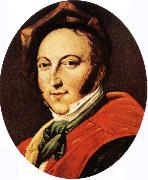 |
leigh hunt
|
|
British writer who defended the romanticism of Keats and Shelley (1784-1859)
Synonyms: Hunt, James Henry Leigh Hunt |
|
|
|
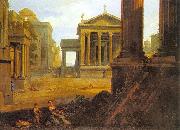 |
Lemaire, Jean
|
|
1763-64, oil on canvas, The Hermitage, St. Petersburg |
|
|
|
|
|
|
|
lennart nilsson
|
|
1992, intestines of a new-born baby . colour photograph. lennart nilsson photography ab, stockholm |
|
|
|
|
|
|
|
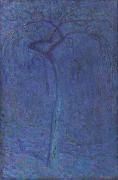 |
Leo Gestel
|
|
Leo Gestel (11 November 1881, Woerden- 26 November 1941, Hilversum) was a Dutch painter. His father Willem Gestel was also an artist. Leo Gestel experimented with cubism, expressionism, futurism and postimpressionism. Along with Piet Mondrian he was among the leading artists of Dutch modernism. |
|
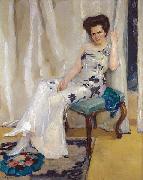 |
Leo Putz
|
|
Germany (1869 -1940 ) - Painter
|
|
|
|
|
|
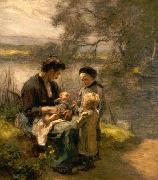 |
Leon Augustin Lhermitte
|
|
(1844 - 1925) was a French realist painter and etcher whose primary subject matter was of rural scenes depicting the peasant worker.
He was born in Mont-Saint-Pere. A student of Lecoq de Boisbaudran, he gained recognition after his show in the Paris Salon in 1864.
His many awards include the French Legion of Honour (1884) and the Grand Prize at the Exposition Universelle in 1889. Lhermitte died in Paris in 1925.
Lhermittees innovative use of pastels won him the admiration of his contemporaries. Vincent Van Gogh wrote that eIf every month Le Monde Illustre published one of his compositions ... it would be a great pleasure for me to be able to follow it. It is certain that for years I have not seen anything as beautiful as this scene by Lhermitte ... I am too preoccupied by Lhermitte this evening to be able to talk of other things.e
Lhermitte's etchings and paintings are housed in museums around the world including Boston, Washington, Chicago, Montreal, Brussels, Rheims, Paris, Moscow and Florence.
|
|
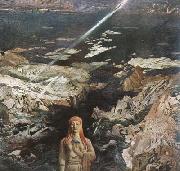 |
Leon Bakst
|
|
Russian Art Deco Designer and Illustrator, 1866-1924 |
|
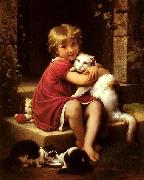 |
Leon Bazille Perrault
|
|
(20 June 1832, Poitiers - 1908, Royan) was a French painter.
A student of William Bouguereau and François-Edouard Picot, he exhibited at the Salon from 1863 onwards, producing several works, in the academic tradition. He was famous for his le petit naufrag (The little shipwrecked boy, 1874) and his paintings of children.
|
|
|
|
|
|
|
|
|
|
 |
Leon Comerre
|
|
Leon François Comerre French. 1850 - 1934 |
|
|
|
 |
Leon Joseph Florentin Bonnat
|
|
(20 June 1833 - 8 September 1922) was a French painter.
He was born in Bayonne, but from 1846 to 1853 he lived in Madrid, where his father owned a bookshop. While tending his father's shop, he copied engravings of works by the Old Masters, developing a passion for drawing. In Madrid he received his artistic training under Madrazo. He later worked in Paris, where he became known as a leading portraitist, never without a commission. His many portraits show the influence of Velezquez, Jusepe de Ribera and other Spanish masters, as well as Titian and Van Dyke, whose works he studied in the Prado. Following the period in Spain Bonnat worked the ateliers of the history painters Paul Delaroche and Leon Cogniet (1854) in Paris. Despite repeated attempts, he failed to win the prix de Rome, finally receiving only a second prize. However, a scholarship from his native Bayonne allowed him to spend three years in Rome (1858 - 60) independently. During his stay in Rome, he became friends with Edgar Degas, Gustave Moreau, Jean-Jacques Henner and the sculptor Henri Chapu.
He won a medal of honor in Paris in 1869, going on to become one of the leading artists of his day. Bonnat went on to win the Grand Officer of the Legion d'honneur and became a professor at the Ecole des Beaux Arts in 1882. Bonnat was quite popular with American students in Paris. In addition to his native French, he spoke Spanish and Italian and knew English well, to the relief of many monolingual Americans. In May 1905 he succeeded Paul Dubois as director of the Ecole des Beaux-Arts. Bonnat "was a liberal teacher who stressed simplicity in art above high academic finish, as well as overall effect rather than detail," explains Julius Kaplan (see References). Bonnat's emphasis on overall effect on the one hand, and rigorous drawing on the other, put him in a middle position with respect to the Impressionists and academic painters like his friend Jean-Leon Gerôme.
|
|
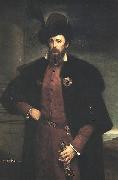 |
Leon Kaplinski
|
|
(1824-1873) was a Polish painter and political activist.
Born 1824 in Lisew not far from Warsaw, Leon was the son of a small landowner and an eminent freemason Jan Kaplieski. The Kaplieskis were a Frankist family; his grandfather Eliasz Adam Kaplieski was one of the last known Frankists. Leon Kaplieski studied law and philosophy in Warsaw and Wrocław (Breslau). He was engaged in revolutionary underground groups, fled from the part of Poland under Russian rule, was briefly held and interrogated by the Prussian police, and took part in the revolutionary movement in 1848. In the same year Kaplieski emigrated to Paris where he spent most of his remaining years. He took part in Polish emigre political activities, closely connected with the circle of Hotel Lambert and the Czartoryski family, accompanied the Count Witold Czartoryski during his trip to the Balkans and the Near East. Kaplieski also edited the periodical Ephemerides Polonaises. He was married to Helena Hryniewiecka. In 1871 he moved back to Poland, living mostly in Krakew, and died in 1873 in Milosław. He befriended several well-known Polish artists and writers, including Henryk Rodakowski, Jan Matejka, and Cyprian Kamil Norwid.
Kaplieski studied art in Poland and later in Paris. His first known works are copies of paintings by famous Italian artists; later he became known and appreciated for his patriotic historical paintings as Wernyhora (1855). His best works are portraits: of his mother Julia (1860), the writer Bohdan Zaleski (1857), Count Adam Jerzy Czartoryski (about 1860), and an autoportrait as a Templar (about 1872). Many of his paintings and other works have perished or been lost. Mainly influenced by classical Italian art and his contemporary Rodakowski, L.K. continued the tradition of academic painting and had no interest for the emerging modernist tendencies of the mid-nineteenth century. He won some recognition in France, participating in the Paris art salons. L.K. wrote some poems and a short novel Nad Wisłą (On Wisla).
|
|
|
|
|
|
|
|
|
|
|








